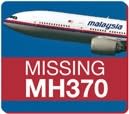MH370 hunt enters new US$56 million phase, to include private search firms, says CNN

The hunt for flight MH370 has entered a new and costly phase as Australia announced that it is expanding its search zone.
Search officials told CNN yesterday that this new phase, which may take months to complete, will be a more intense underwater search that will require the skills of private contractors and cost about US$56 million (RM183 million).
"I regret to say that thus far none of our efforts in the air, on the surface or under sea, have found any wreckage," Australian Prime Minister Tony Abbott said yesterday, adding that by now, most of the debris will have become waterlogged and will have sunk.
CNN reported that it wasn't immediately known how family members of the missing passengers greeted yesterday's news.
The international news broadcaster added that many family members planned to take their concerns to Boeing when the aircraft giant holds its annual shareholders meeting in Chicago yesterday.
"The briefings are a joke," said Sarah Bajc, whose partner, Philip Wood, was a passenger on the plane. "The patience level of the families group is just gone."
"Boeing is a publicly traded company in the United States, and that puts them in a position of a little bit more fiduciary responsibility," she told CNN.
The Wall Street Journal (WSJ) reported yesterday that searchers now face an arduous task of scouring an area of seabed covering around 60,000 square kilometres – about the size of the US state of West Virginia. That compares with the roughly 400 square kilometres of ocean floor covered by a Bluefin-21 underwater drone in the past weeks' search.
WSJ said the expanded search area spans a wide arc of sea extrapolated from the partial digital "handshake" between Flight 370 and an Inmarsat satellite on March 8, some hours after the plane disappeared from radar screens en route to Beijing from Kuala Lumpur.
Abbott and search officials told the business daily that it would take roughly eight months to scour the expanded area fully. But they warned even that is an optimistic assessment: Bad weather and technical glitches like those that disrupted the initial underwater search are likely to cause delays.
Abbott also said that the Australian government will continue to work with Malaysian and Chinese authorities. But "one or more" private companies will be contracted to assist.
CNN reported that further technology, including a number of other underwater vehicles both private and public, could also be pressed into service. Some of them can go miles deeper than the Bluefin and remain underwater for weeks at a time.
US-based Woods Hole Oceanographic Institution, which helped recover the black boxes from the ill-fated Air France crash, is among the organisations enlisted to help with the search. Its undersea drones are able to go deeper than the Bluefin, which had to be brought to the surface every 20 hours so its data could be downloaded.
As the search for the missing airline is into day 53, it has been predicted that this multinational endeavour would be the most expensive in aviation history.
Estimates compiled by Reuters on April 8, 2014, showed that at least US$44 million (RM143.68 million) has already been spent on the deployment of military ships and aircraft in the Indian Ocean and South China Sea by Australia, China, the United States and Vietnam.
The figure was based on defence force statistics on available hourly costs of various assets, estimates by defence analysts and costs reported by the Pentagon.
Malaysia Airlines flight MH370 disappeared on March 8 en route to Beijing from Kuala Lumpur with 239 passengers and crew members on board. – April 29, 2014.
